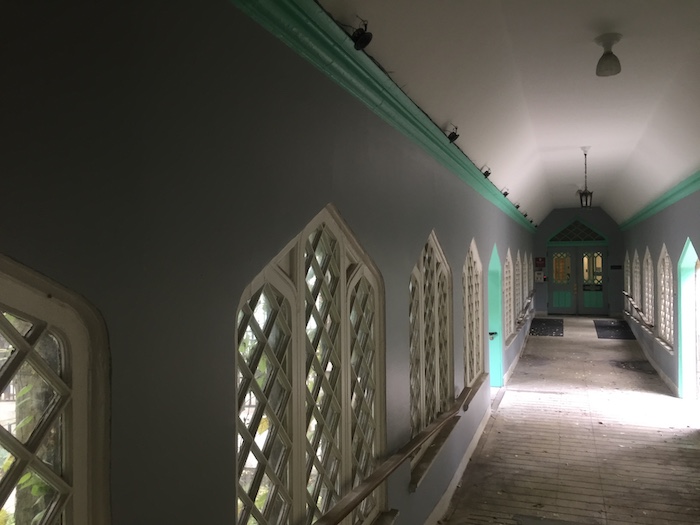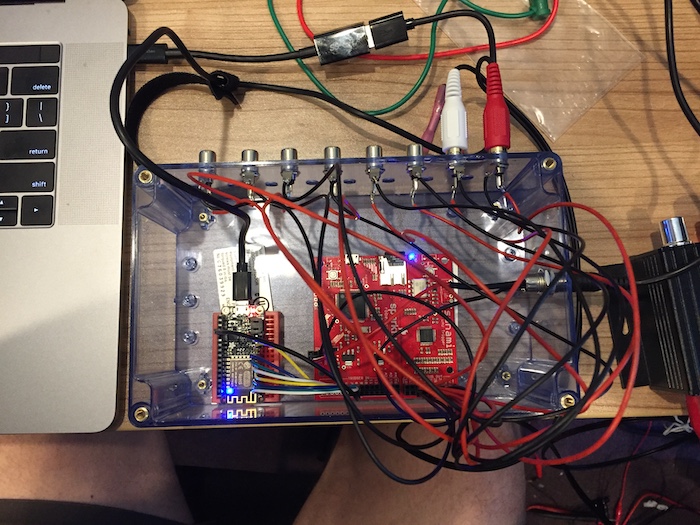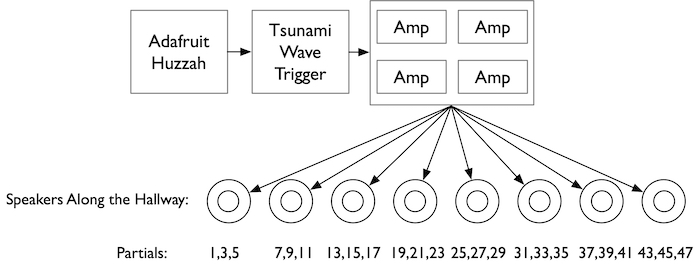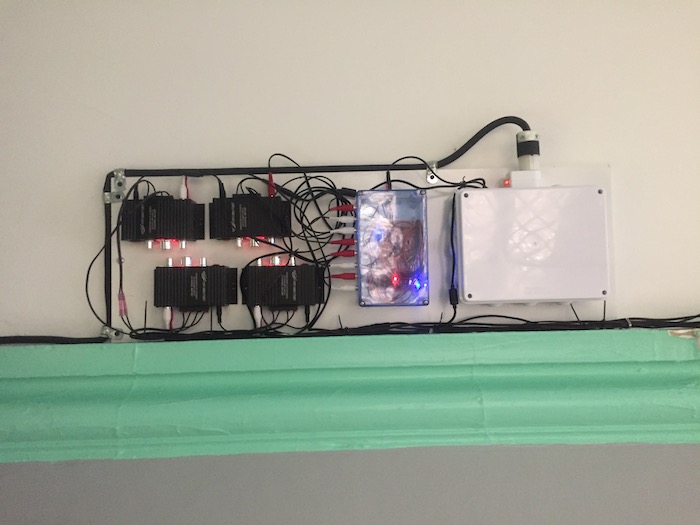




When I lived in New York City, my wife and I rented an apartment in Morningside Heights that we were only able to afford due to heavy subsidies on graduate housing from Columbia University. It was an absurdly tiny one-bedroom with a combination living room/kitchen that also ran triple-duty as my wife’s office (mine was in the bedroom). The apartment was less than 400 square feet. When Columbia had taken over the building, they had taken larger three-or-more-bedroom apartments and divided them into two separate apartments. Thus, when you entered our apartment you would walk down a long, narrow hallway that ran adjacent to our neighbor’s apartment and connected the building’s foyer to our bedroom and living room. At about 20ft long and 3ft wide, this space was relatively useless (except for as a storage space) and was usually lined with piles of luggage, shoes, electronic equipment, mic stands, and cables.

With the hope of making this space fun and joyful, instead of annoying and useless, I dreamed up an installation that I wanted to place in the space, but never got around to. This installation would take advantage of the length of the hallway, with a multitude of speakers placed along the wall, facing the listener as they walked from one end to the other. A single harmonic series, from the fundamental and up, would be placed in physical series along the wall. Thus, when the listener was at one end of the hallway they would be closest to the fundamental and low partials and when at the other end closest to the high partials. When the listener was stationary, the installation would sound like a single tone, but as they walked up and down the space they would experience a kind of filter sweep as the tone went from dull to bright or vice versa. The listener would “perform” the piece by moving through space, thus discovering the physical layout of the harmonic series through focused listening and play. I never was able to create this installation while in New York, but when I saw the two long, narrow passageways of the flanking Cobb Gate, I knew I had the perfect location.

Interaction and audio-visual fusion are two important aspects of all of my work. As described above, I want to create a physical space for the listener to interact with, and perform in, in order to perceive my piece. Thus, the listener is simultaneously the performer of the piece, altering their perception of its sound by physically interacting with space, and its sole audience member. The work sounds completely different to each audience member, as their physical location in the hallway is the most important determinant of their sonic experience, thus the work is a personal concert for one each person walking down the hallway.

There is a second interactive journey for the perceiver of this work, and that is the software/hardware puzzle it creates for the listener to solve. In our increasingly digital world, the seams left over from the creation of systems are gradually disappearing from view. From our computers to our phones to our cars and televisions, the guts of our devices, once a beautiful mess of wires and transistors, hide behind shiny graphical interfaces, leaving impenetrable black boxes of function and snuffing out the potential kindling for fires of curiosity about how things work. With this work and works like it, I aim to leave the seams out in the open. The audience member can view all of the elements of the circuit, see the wires connecting its disparate parts, and imagine how the circuit functions to create the sound: the Adafruit Huzzah microcontroller sends triggers to the Tsunami Wav Trigger. The Wav Trigger plays sound files and converts them from digital to analog form. The analog signal is sent out eight separate channels to the four stereo amplifiers. The amplifiers amplify the eight individual signals, sending them down wires to the eight speakers lined along the hallway. My hope is that this work, and works like it, spark a curiosity about hardware and software-based artistic systems, encouraging inquiring minds to build their own worlds out of bits of code, wire, wood, and current.
